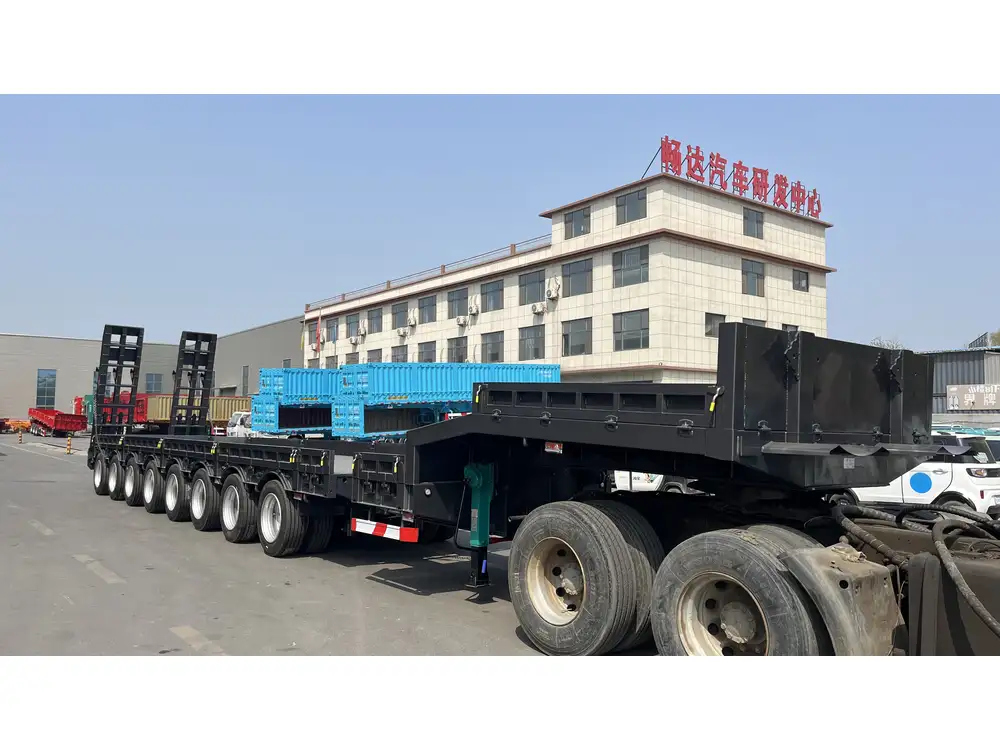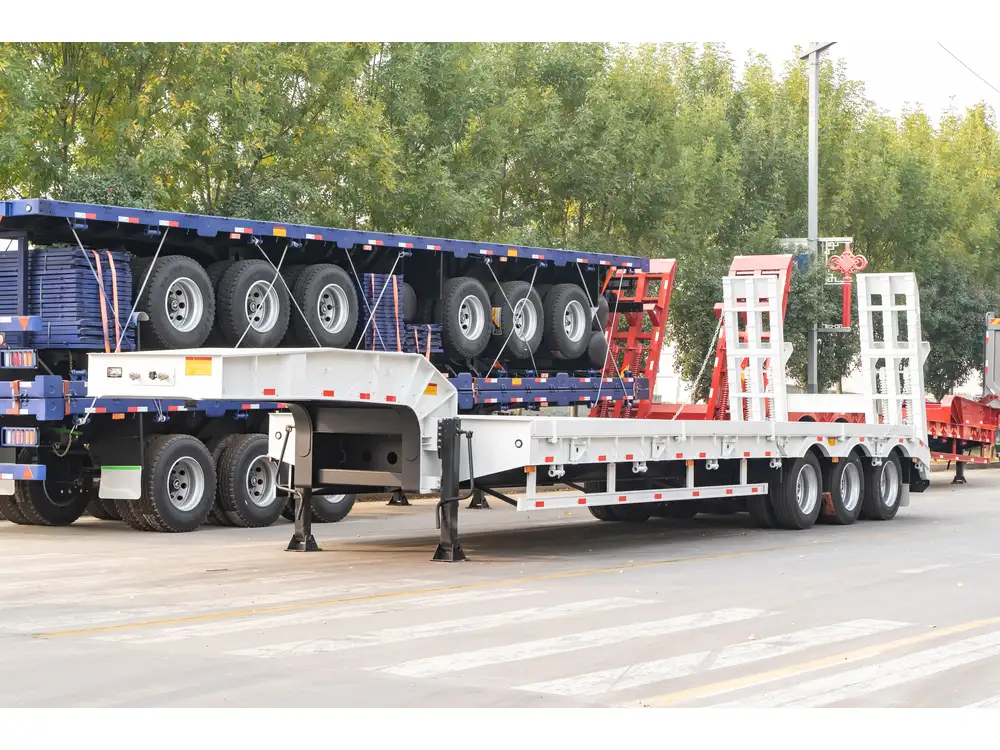Parking a semi-trailer can be an intimidating challenge, particularly when it involves the precision required for side parallel parking. This maneuver, often seen as the epitome of trucking proficiency, requires not just skill but a solid understanding of both vehicle dimensions and driving techniques. In this article, we will dissect the essential steps, techniques, and tips to execute a flawless side parallel park with a semi-trailer. Whether you are a seasoned trucker or a newcomer to trucking, mastering this skill can enhance your confidence and safety on the road.
Understanding Your Vehicle
Before delving into the techniques, have a thorough understanding of your semi-trailer. Knowledge of its dimensions, weight distribution, and turning radius is crucial.
| Component | Description |
|---|---|
| Overall Length | Standard lengths range from 48 to 53 feet |
| Width | Typically around 8.5 feet |
| Height | Average height can reach 13.5 feet |
| Turning Radius | Varies by truck model; generally, it’s around 20–30 feet |
Knowing Your Blind Spots
Familiarize yourself with the blind spots of your semi-trailer. These areas can impede your view while maneuvering, increasing the risk of accidents. The primary blind spots include:
- Directly in front of the cab (11 – 20 feet)
- Directly behind the trailer (up to 30 feet)
- The sides of the trailer, especially during turns
Understanding these will help you to utilize mirrors effectively while parking.

Preparing to Park: Scanning Your Environment
Before initiating the parking process, assess your surroundings:
- Look for Obstacles: Ensure the pathway for parking is free of obstructions such as traffic cones, other vehicles, or ground unevenness.
- Space Requirements: It is essential to identify a parking spot that is sufficiently long and wide to accommodate your trailer without the risk of hitting adjacent vehicles.
- Environmental Conditions: Consider the weather. Rain, snow, or ice can impact traction and visibility, making the process more challenging.
Step-by-Step Guide to Side Parallel Parking a Semi-Trailer
Step 1: Position Your Vehicle
Align the Cab: Drive alongside the parking space where you intend to park. Position your cab parallel to the front of the spot, leaving roughly 2-3 feet of space between your vehicle and the parked vehicles.
Check Mirrors: Utilize your mirrors to confirm clearance on both the left and right sides of your trailer.

Step 2: Initiate the Maneuver
Start Reversing: Shift your vehicle into reverse gear. As you begin to back up, turn the steering wheel towards the parking space. Typically, this means turning left if the parking space is on your left.
Monitor Trailer Movement: Watch your trailer closely in the mirrors. The goal is to angle your trailer towards the parking space correctly.
Step 3: Adjust and Correct
Angle the Trailer: When the rear of your trailer is about halfway into the parking space, straighten your steering wheel briefly. This action will help you reposition the trailer within the parking space effectively.
Re-Adjust Direction: If necessary, once the trailer is about 75% through the parking process, turn the steering wheel in the opposite direction to guide the front of your cab into the space.
Step 4: Final Positioning
Square Up the Trailer: As your cab clears the rear of the parked vehicle, straighten the wheel again to align your semi-trailer parallel with the curb or the rear of the adjacent trailer.
Check All Sides: Always use your mirrors to check clearance on both sides. Ensure you are adequately positioned within the space, with ample room for other vehicles to maneuver.

Step 5: Secure the Vehicle
Once you have successfully parked, engage your parking brake, and put the vehicle in park. Conduct a final check of your mirrors before exiting to ensure that the area around your trailer is clear.
Potential Parking Pitfalls & How to Avoid Them
Common Mistakes Made While Parallel Parking a Semi-Trailer
Misjudging Space: Many fail to assess whether their trailer will truly fit in the chosen space; always err on the side of caution and choose a larger area if in doubt.
Incorrect Steering Input: Oversteering is a common error. Small adjustments are often more effective than large, sweeping turns.
Neglecting to Use Mirrors: Failing to consistently check mirrors can lead to accidents. Take a brief moment at each stage of the maneuver to look and check your surroundings.
Rushing Through the Process: Hasty maneuvers can often lead to mistakes. Take your time and remain calm.

Enhancing Your Skills: Parking Practice
Suggested Drills to Improve Your Parking Technique
Engaging in practice drills can dramatically enhance your coordination and control. Consider creating a tandem parking practice area:
- Utilize Cones: Set up cones to simulate parked cars. Create parking scenarios with varying widths to challenge your parking ability.
- Mock Scenarios: Practice both daytime and nighttime scenarios, as well as two-person and single-person setups, to simulate real-world conditions.
| Practice Scenario | Description | Frequency |
|---|---|---|
| Simple Parallel Park | Straight-in parking with space for practice | 2-3 times a week |
| Obstacle Courses | Set up cones to simulate tight urban environments | 1 time a week |
| Night Time Parking | Practice parking in dim light conditions | 1-2 times a month |
Additional Tips for Semi-Trailer Side Parking
Stay Calm: It is essential to maintain composure. Stress and anxiety can impair judgment and reaction times.
Turn Off Distractions: Ensure that your cabin is free from distractions, including loud music or conversations, while maneuvering.
Seek Feedback: If you have a mentor or colleague experienced in driving, ask for constructive criticism after practicing. This outside perspective can help you fine-tune your technique.

The Importance of Technology in Parking Assistance
Modern semi-trailers often come equipped with advanced technology to assist drivers in parking maneuvers. Understanding and utilizing these can lead to better control and reduced errors. Some notable technologies include:
Blind-Spot Monitoring Systems: These systems provide alerts when other vehicles are in blind spots.
Rearview Cameras: High-definition cameras can enhance vision while reversing, providing a broader view of the reality behind.
Automatic Emergency Braking: This technology applies the brakes automatically if it detects an imminent collision.
| Technology | Benefit |
|---|---|
| Blind-Spot Monitoring | Reduces risk of collisions |
| Rearview Cameras | Increases visibility |
| Automatic Emergency Braking | Enhances safety through quick intervention |
Conclusion: Achieving Parking Mastery
Mastering side parallel parking with a semi-trailer takes both practice and patience. By understanding your vehicle, preparing adequately, and utilizing effective techniques while avoiding common pitfalls, you can enhance your skills and confidence behind the wheel.
Regular practice, familiarity with both technology and troubleshooting, and staying composed will position you as an adept driver capable of navigating parallel parking challenges with ease. Emphasizing safety first not only promotes a secure parking experience but also contributes to the overall well-being of yourself and fellow road users. As you refine your abilities, remember that with every maneuver practiced, you’re not merely parking—you’re enhancing your trucking prowess and ensuring the road remains a safer place for all.
Take pride in your journey, and regularly revisit these guidelines to continually improve your skills. Happy parking!



